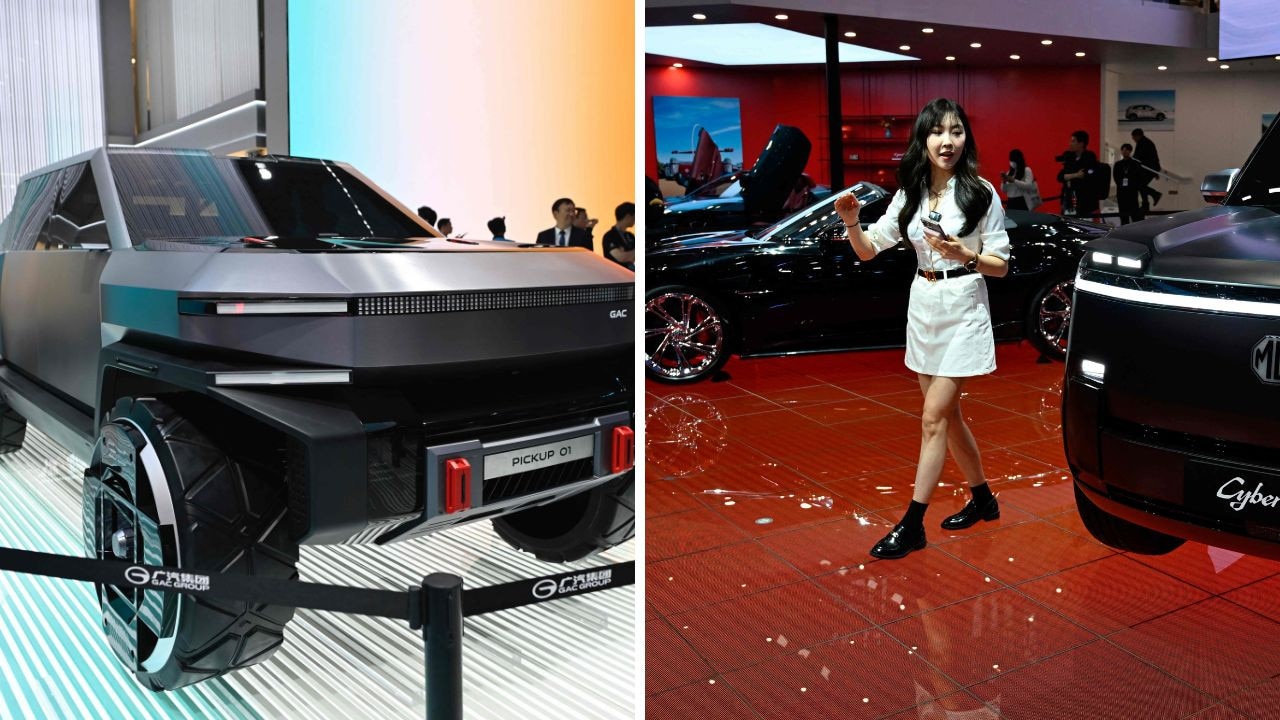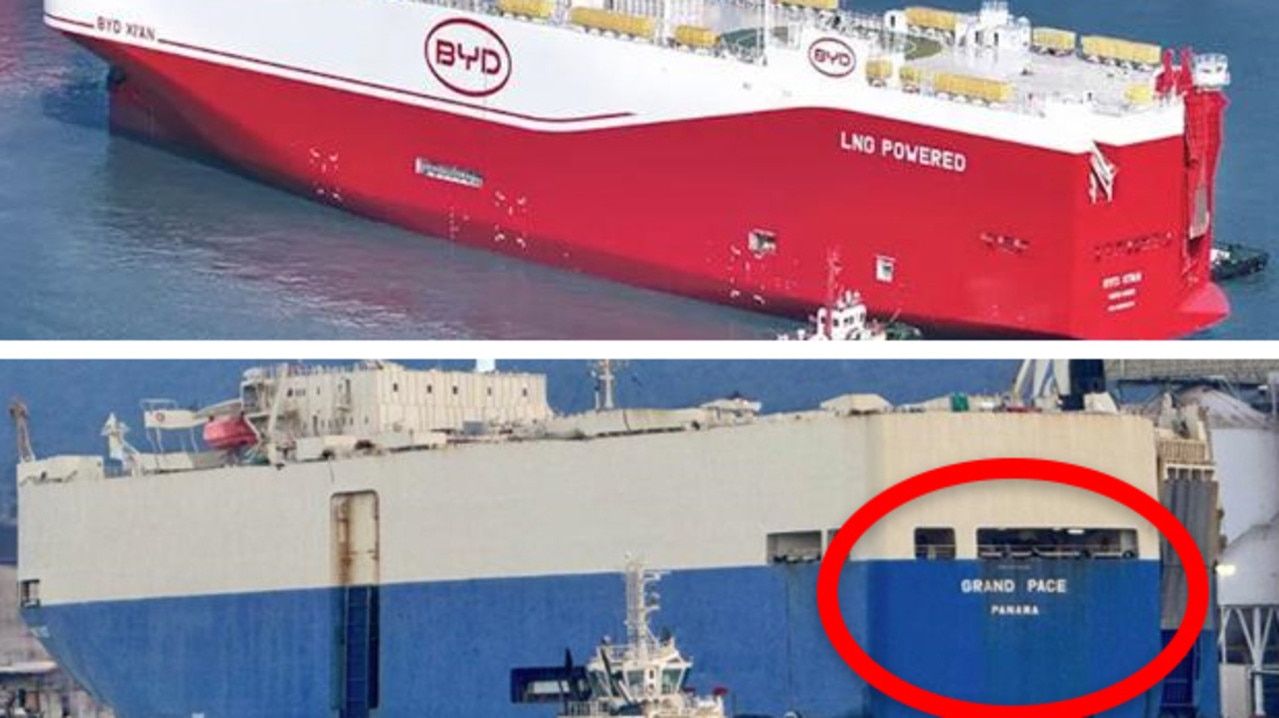Toyota HiLux diesel compared with Ford F150 Lightning EV
The government and opposition have been trading barbs about the practicality of electric pick-up trucks. Here are some of the key facts.
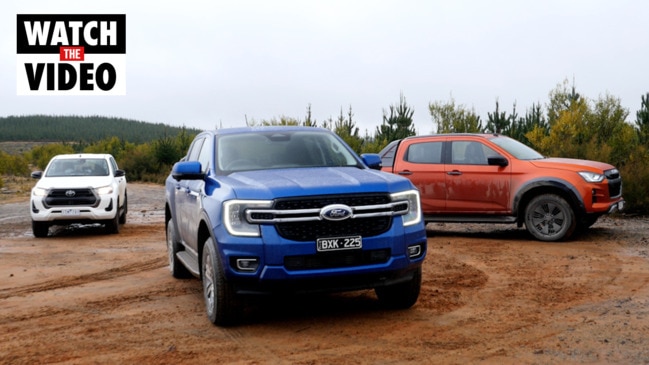
Motoring News
Don't miss out on the headlines from Motoring News. Followed categories will be added to My News.
Ford’s F150 Lightning electric pick-up truck has been a big hit in the US.
The company says it had planned for roughly 40,000 orders in its first year on sale but had to close the books after taking more than 220,000 orders.
Ford says buyers aren’t buying the Lightning to save the planet. They like the massive power outputs and the ability to run power tools from the truck.
But how does it compare to our most popular vehicle, the Toyota HiLux?
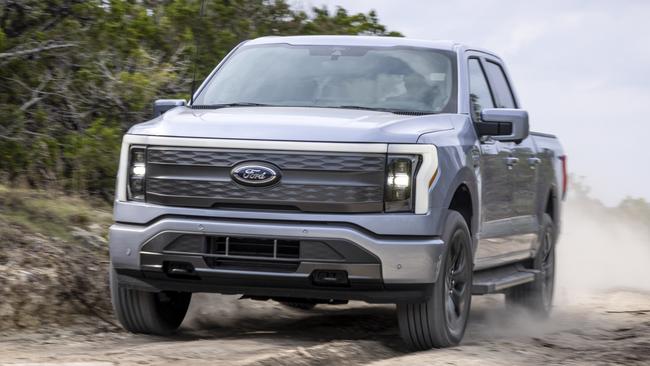
PRICE
The F150 Lightning starts at $US46,974 ($A72,130) for the standard-range version and $US80,974 ($A124,500) for the long-range. The most popular version of the HiLux, the SR5 costs $59,180. F150 Lightning buyers in the US are now eligible for an EV rebate of $US7500 ($A11,520).
Don’t expect to be able to buy an F150 for that sort of money in Australia, though, as it’s only made in left-hand-drive. It would need to be converted locally and the price tag for the cheapest model would likely reach six figures.
An electric version of the Ford Ranger or a smaller ute is more likely. It would be built in Thailand and would be cheaper, but it would still cost significantly more than the diesel Ranger.
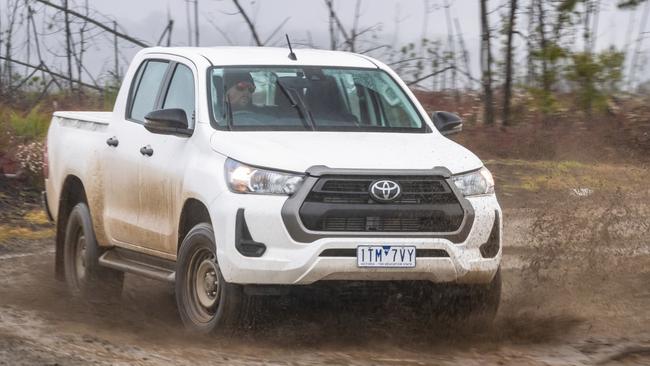
PERFORMANCE
A no-contest here. The HiLux reaches 100km/h in a leisurely 10 seconds flat, while the F150 makes the journey is just 4.5 seconds.
The HiLux puts out 150kW of power and 500Nm of torque, while the Lightning has 420kW and 1050Nm.
Twice the torque makes towing a breeze, while the extra weight of the battery makes the truck more stable when lugging a load.

RANGE
Another no contest, this time in the HiLux’s favour. The HiLux has an 80-litre fuel tank and officially uses 8.0 litres of fuel for every 100km, giving it a range of 1000km between refills. The Lightning has a maximum range of between 386km and 483km.
But those numbers are deceptive. Diesel vehicles use more fuel in stop-start traffic but are more economical on the open road. The reverse is true of electric vehicles. So where the HiLux might be good for 1100km or more between fills, the Lightning is likely to need refilling after 400km.
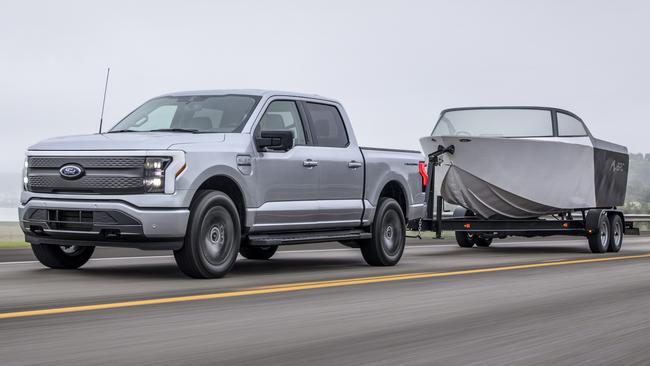
TOWING
Towing typically cuts range in half for both diesel and electric vehicles. The difference is you have more range to play with in a diesel vehicle. You might get 500km out of a HiLux towing a caravan, while the Lightning is likely to be closer to 200km.
Once empty, the HiLux takes five minutes to refuel while the Lightning needs 40 minutes to charge from 15 to 80 per cent. At 30c per kWh, the Lightning will cost about $40 to recharge at home and roughly double that at a fast charger. The HiLux will cost roughly $180 to refill, based on the current three-month average for diesel.
If you want to tow a lot a short distance, then the Lightning is the pick. It can tow 4500kg to the HiLux’s 3500kg.
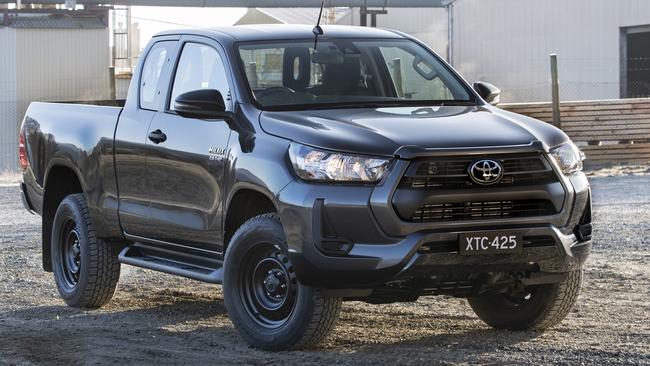
THE ENVIRONMENT
The F150 is a much bigger vehicle than the HiLux and will create more CO2 when it’s being built, but things will even out the longer it’s on the road.
A joint University of Michigan-Ford study of “cradle-to-grave” CO2 emissions found that battery electric pick-up trucks produced just 35 per cent of the CO2 produced by diesel and petrol pick-ups. The study was based on the average CO2 emissions of the US grid, where only 17 per cent of electricity is renewable. In Australia, 24 per cent of the grid is renewable.
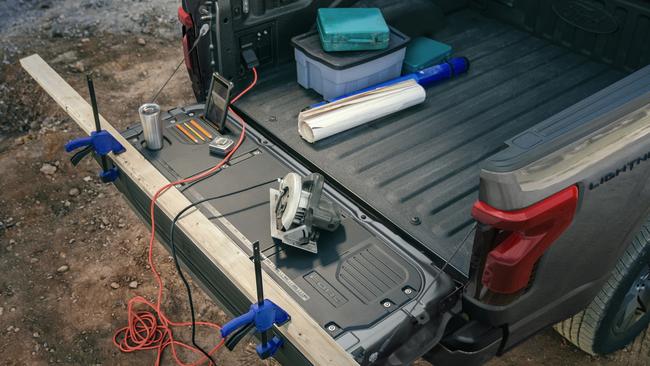
PRACTICALITY
The F150 Lightning has a frunk – a storage area where the engine used to be – that can fit two golf bags, or a week’s grocery shopping. In the HiLux there is no lockable, dry storage area, so shopping bags either go in the rear tray or on the floor of the passenger compartment.
The F150 also has vehicle-to-grid and vehicle-to-load capacity. It has ten household powerpoints, which means tradies can plug in work equipment on an unpowered site. The F150 can also power the average home for up to three days during a blackout.
Andrew Bolt: Fact-checking Chris Bowen’s Ford F150 claims
Originally published as Toyota HiLux diesel compared with Ford F150 Lightning EV


